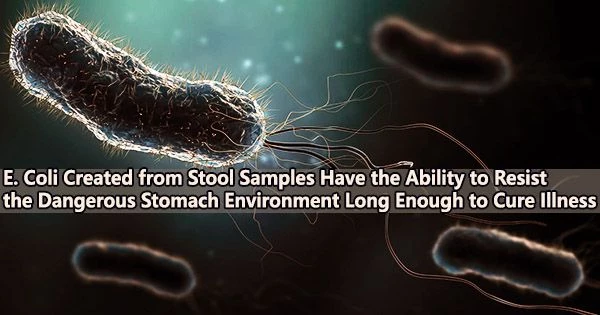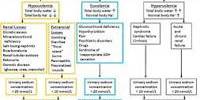In order to treat diseases, scientists have long tried to introduce genetically modified bacteria into the gut. In the past, these efforts have mostly concentrated on genetically modifying ordinary lab strains of E. coli, which are unable to compete with the native gut bacteria that are perfectly adapted to their host.
The potential to treat diseases like diabetes has now been demonstrated by a team of researchers from the University of California, San Diego, who successfully altered E. coli isolated from the gut microbiomes of both mice and humans. Their finds are publishing in the journal Cell on August 4, 2022.
“All I can say to the non-native bacteria is good luck. The gut microbiome is very dynamic and is constantly changing, making things even harder for the non-native bacteria,” says Amir Zarrinpar, a gastroenterologist at UC San Diego Health and the senior researcher of the paper. “It is challenging for bacteria that have never lived inside of a mammal before to now go into the gut microbiome jungle with all of these hostile conditions that are geared towards preventing bacterial invaders from taking hold.”
The team created a remedy for this issue by modifying E. coli obtained from the hosts directly.
“Bacteria in our body are adapted to each one of us specifically: the kind of foods we eat, the common stresses our body experiences or induces, and our genetic background,” says Zarrinpar. “This constantly fluctuating environment is their normal.” This is a big advantage for native bacteria and makes them ideal candidates for engineering.
Native bacteria are very resistant to modifications; it is part of their innate defense mechanism. There are many new genetic engineering tools available now that will allow us to engineer these bacteria more effectively.
Professor Amir Zarrinpar
“We have engineered these bacteria to become factories that can live in our microbiome and potentially produce medicines,” says Zarrinpar. “We know that E. coli can pick up pathogenic genes and cause disease, and now we’re just realizing that if we put a beneficial gene in, it can help us to treat chronic diseases, maybe even cure some of them.”
The team first collected stool samples from the host and extracted E. coli for further modifications.
“We say to the bacteria: Hey, we will give you a new superpower, which you may not even benefit from, but we will put you right back into the environment that you thrive in,” says Zarrinpar.
An enzyme called bile salt hydrolase is the protein that the team provided to these particular bacteria as a superpower (BSH). E. coli carrying BSH were discovered throughout the whole stomach of the mice after just one treatment, and they continued to produce BSH throughout the host’s lifetime. The team also demonstrates how BSH activity can prevent mice from developing diabetes.
This is a vast improvement over similar treatments using laboratory strains of created bacteria that are non-native, where many treatments are frequently necessary. And these engineered bacteria do not stay in the host’s gut for nearly as long as, or as consistently as, the native E. coli method identified by Professor Zarrinpar’s team.
The team was able to modify E. coli taken from human gut in a manner comparable to how it effectively influenced diabetes in mice.
Even though they have shown significant successes, engineering native microorganisms has its own set of difficulties.
“Native bacteria are very resistant to modifications; it is part of their innate defense mechanism,” says Zarrinpar. Zarrinpar and his team are improving this procedure, but their statistics indicate that introducing a gene into a native bacterium has a 100-fold lower success rate than doing it with lab strain bacteria.
“There are many new genetic engineering tools available now that will allow us to engineer these bacteria more effectively,” says Zarrinpar.
The group is planning on using this technology to find ways to treat more diseases.
“We are dreaming big,” says Zarrinpar. “This technology is something that can potentially open up the application of the microbiome therapy to influence so many different chronic and genetic diseases.”
















